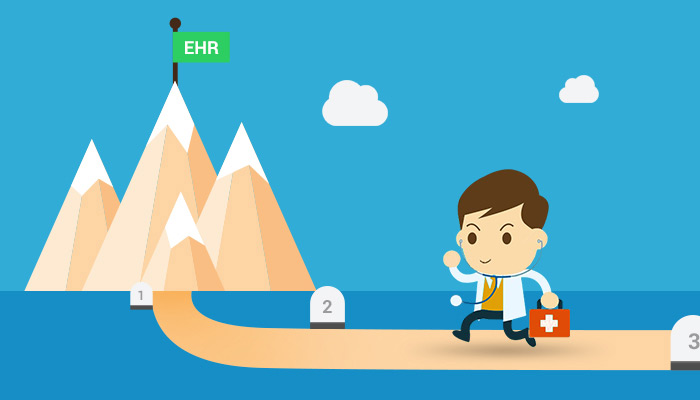
Following the implementation of an electronic health records (EHR) system, EHR optimization should be the next critical objective for a medical practice. One way to plan a road-map for optimization is to generate benchmarks.
Below are three important benchmarks to help your practice determine if you’re getting the most out of your EHR system.
- Computerized Physician Order Entry Indicators
Some of the most important benchmarks in EHR optimization center around computerized physician order entry (CPOE) indicators. These indicators are critical for identifying the efficiency of an EHR, and complying with Meaningful Use requirements. Fortunately, these are often easy to benchmark. For instance, one indicator for a practice with a high volume of electronic prescribing is the number of pharmacist calls regarding contraindicating medications. This indicator is simple to follow, and can inform a practice whether or not an Electronic Health Record system’s Clinical Decision Support (CDS) alerts or notifications are effective.
Other CPOE indicators that are simple to follow include anything from provider and staff logins to printer use and more. Bottlenecks in data entry can also indicate issues with in-house adoption and areas that could benefit from optimization.
Setting benchmarks for these indicators are an important way to track post-implementation optimization for an EHR system.
- Alignment and Standardization of Use
One very common area in need of optimization post-EHR implementation is standardization of workflows. Technicians, nurses, medical assistants, providers, and staff may all do the same task differently. While there will always be slight variation in workflows between team members, major differences (i.e. printing and scanning a document rather than importing data electronically) can lead to large gaps in optimization further down the road. Fortunately, this is measurable, and can be an important indicator to monitor as you optimize your EHR system. Striving for benchmarks within certain tasks and workflows, such as importing medical histories or documenting in-office medications, can help to clarify standardization (or the need for standardization) within a medical practice.
- Revenue Cycle Management Indicators
Successful implementation of an electronic records system should reflect financial benefits as well as positive workflow and improved patient indicators. Therefore, important benchmarks in EHR optimization include Revenue Cycle Management (RCM) indicators. Leveraging costs per provider vs. clinic volume before and after implementation (taking into consideration training and adoption periods) can help clarify areas that need further optimization. This may involve taking a closer look at EHR pricing models and what the practice’s needs are heading into the future, along with considerations such as personnel volume, clinic growth, federal reimbursements, and more.
Making Benchmarking Actionable
Benchmarking may begin as a method of determining the efficiency of an Electronic Health Record system, but it doesn’t stop there. Monitoring indicators and determining strategies to achieve those goals also aligns a practice with the many objectives of electronic health records in the first place: improved patient safety, thorough documentation, and more efficient workflows, to name a few. Therefore, making benchmarking actionable is critical for the health of the entire practice and its patients. Creating teams to address issues with optimization and working through kinks in workflows after benchmarking and monitoring is the next step to operating a truly successful EHR system.
At blueBriX, we understand that optimizing a thriving EHR system is one with strategic optimization benchmarks and indicators that represent the goals and prospective targets of a medical practice. It starts with an effective EHR system.
Contact us today to learn more about our HITaaS (Healthcare IT as a Service) modules and discover a uniquely innovative approach to healthcare.